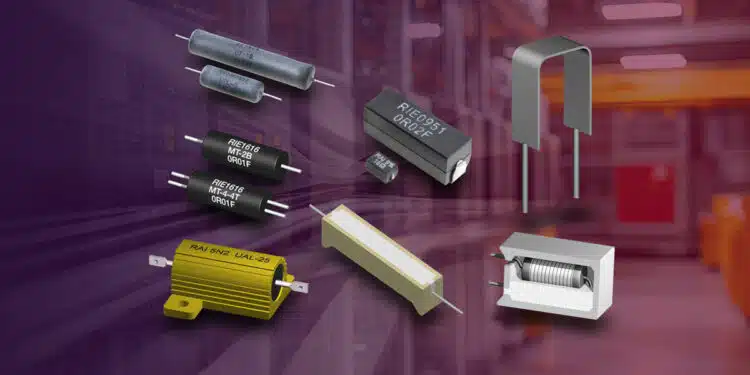Bourns announced extension of Riedon™ model BR/BRT, BRS and UWP series braking resistors that feature power ratings up to 500 W and extended temperature range up to +275 °C.
Bourns, Inc., a leading manufacturer and supplier of electronic components for power, protection, and sensing solutions, announced it has increased its line of Riedon™ Power Resistors with the release of 11 product series.
The resistors feature high power ratings, low TCR temperature coefficients, a wide resistance range, and extended temperature range. To support these advanced features, Bourns is offering the 11 product series in a variety of technologies where certain products are available in numerous packaging options, including wirewound resistors, through-hole and surface mount, along with surface mount SMD resistors metal film and bare/coated metal element resistors.
Bourns engineered this range of technology and packaging options to give designers who work in multiple system domains the ability to match virtually any space or manufacturing assembly requirement.
The resistors offer highly-accurate resistance tolerances and low TCRs that contribute to lower power dissipation designs with higher stability. Certain series feature non-inductive windings to help reduce parasitic inductance for minimal attenuation in high-speed switching circuits. Furthermore, select ceramic wirewound resistor models are flameproof for an extra level of dependability in certain harsh conditions.
Applications such as battery energy storage systems, industrial power supplies, motor drives, smart meters, telecom 5G remote radio and base band units, and current sensing are good examples of systems that can benefit from the advanced features and breadth of products offered in the Riedon™ power resistors by Bourns product series.
All 11 Riedon™ power resistor series by Bourns are available now, and are RoHS compliant.
Features
- Ceramic, silicone coated, surface mount, and aluminum housed wirewound resistors available; Surface mount metal film and bare/coated metal element resistors also included high power and precision current sensing capabilities
- Available resistance tolerances from ±0.01 % to ±10 %
- Numerous packaging styles
- Wide range of resistance values from 0.003 Ω to 3 MΩ with TCRs as low as ±5 PPM/°C
- Power Ratings of up to 50 W and temperature ranges of -55 to +350 °C
- Designed to MIL-R-26 / MIL-R-39007 power ratings (select series)
- RoHS compliant
Applications
- Industrial power supplies, inverters and motor drives
- Smart meters
- Solar inverters
- Telecom 5G remote radio and baseband units
- Capacitor recharge/discharge circuits
- Current sensing































